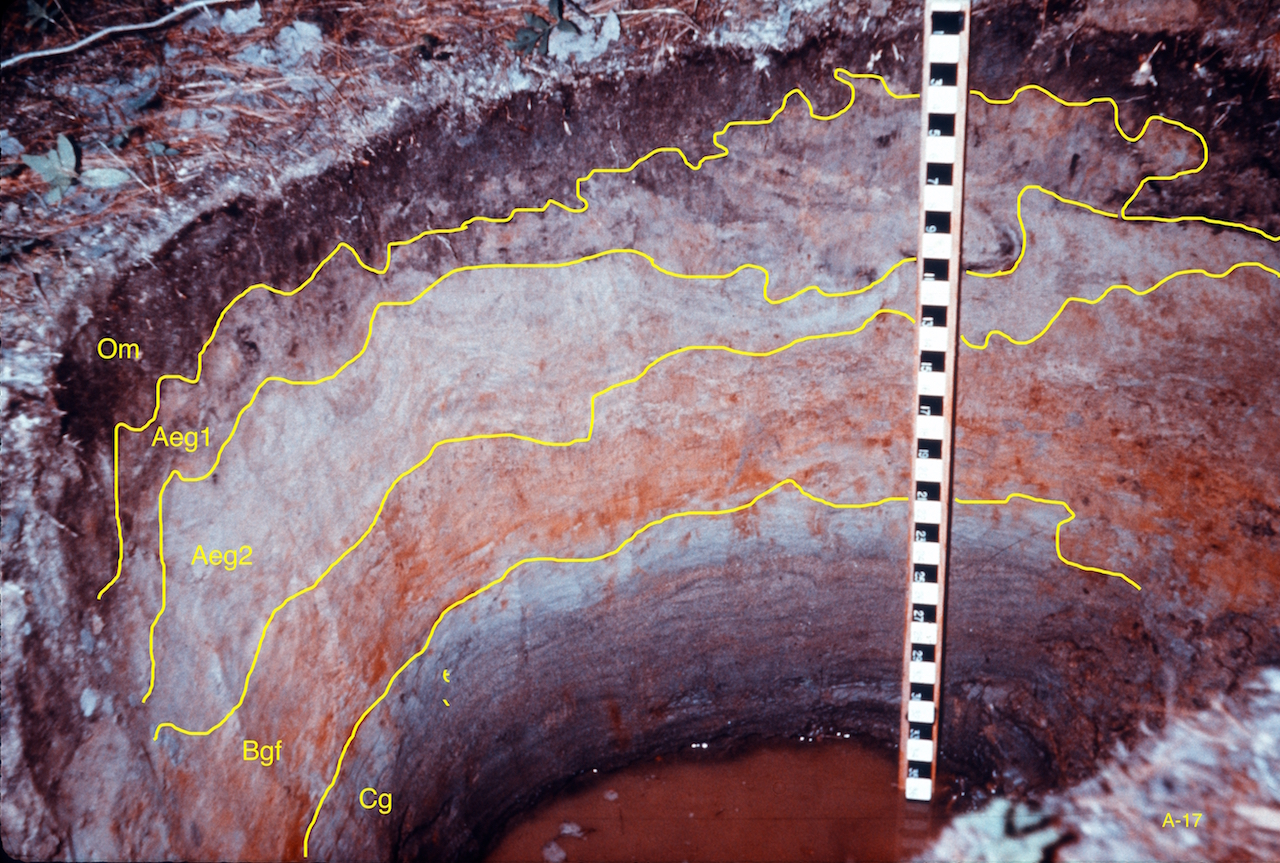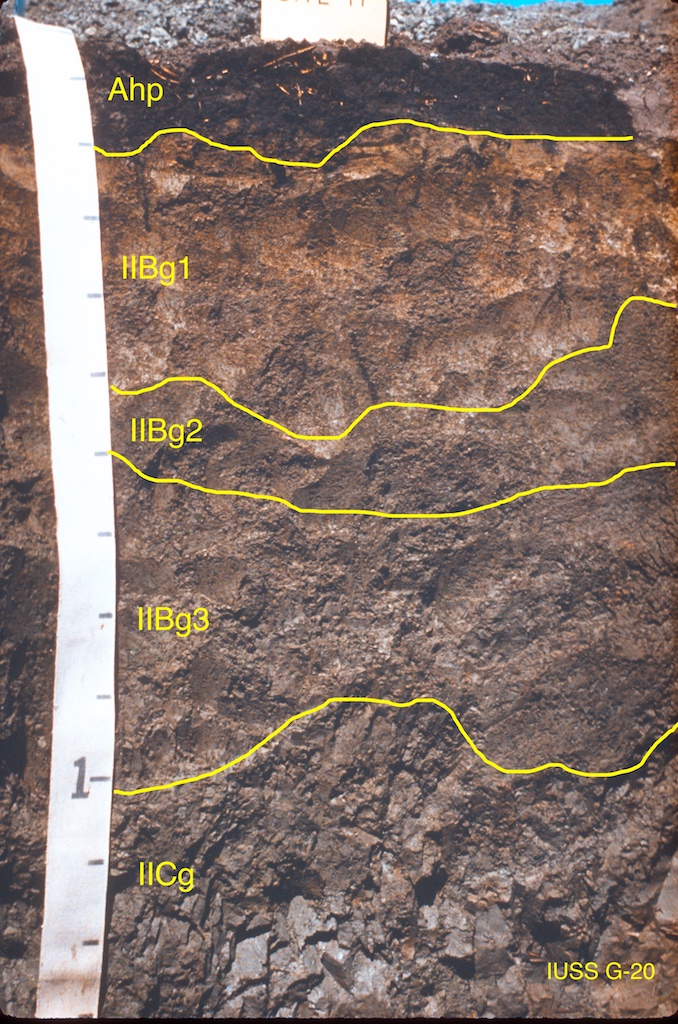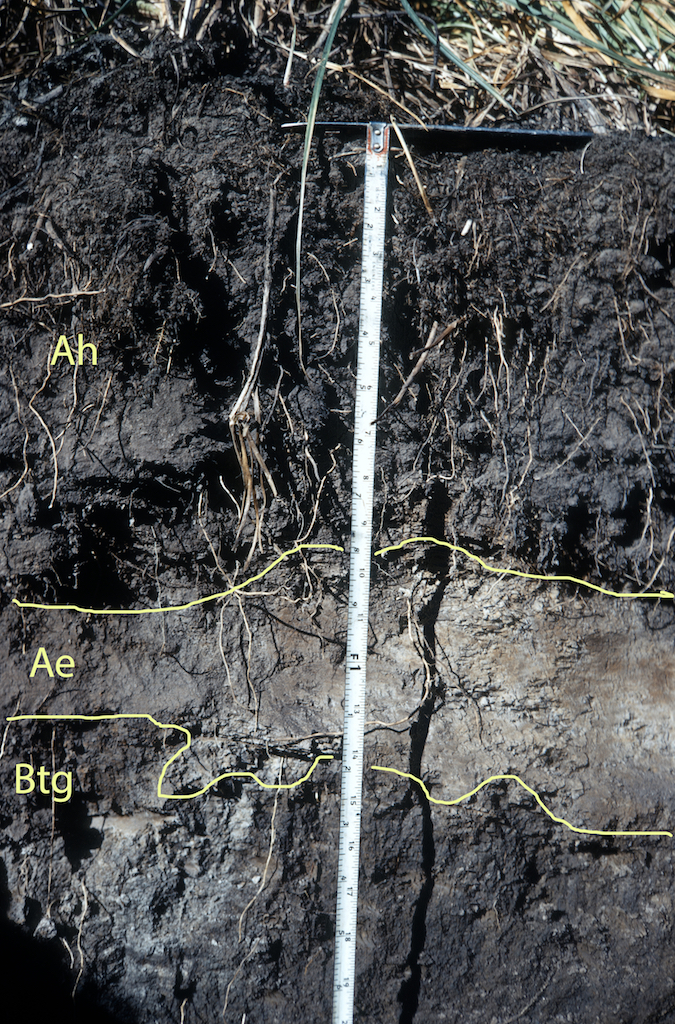Gleysol

The zone of mottling (very reddish streaks and splotches caused by iron oxidation and concentration) is very apparent in this soil. The mottled Bgf horizon overlies a blue-gray Cg horizon. The two Aeg horizons have lost iron (through reduction) and have a dominantly light gray colour with minor amounts of mottling apparent. The surface horizon is a moderately decomposed Om horizon that is too thin to meet the criteria for the Organic Order.
Contributor: Soils of Canada Slide set
Location: Ontario
Humic Gleysol

This soil has a 20-cm thick ploughed A horizon overlying a series of three Bg horizons. The uppermost Bg has many yellowish brown mottles evident but mottles are also found throughout the other two Bg horizons. The Cg has dull blue gray colours typical of Gleyed soils. The soil has formed on clay glacio-marine parent materials, which are very common throughout this area of Quebec. The high clay is evident in the shiny faces on the structural units (peds) in the Cg horizon. These soils typically must be artificially drained to be used for annual cropping.
Contributor: Provincial and federal soil surveyors, IUSS Eastern field trip
Location: St. Hyancinthe County, Quebec
Source: Profile and analytical data on p. 146-148, IUSS 1978 Eastern Canada tour book
Luvic Gleysol

Soils of this great group are very common in wetlands (sloughs) throughout the Prairie Provinces. These gleysols have a texture-contrast horizons – a lower clay Aeg overlies a higher clay Btg horizon. Mottling is not evident in this soil but the Btg has dull, blue-grey colours associated with it. The soil has a thick Ah horizon; these soils often have received eroded soils from upslope positions and have thick cumulic A horizons.
Contributor: Darwin Anderson
Location: Saskatchewan
